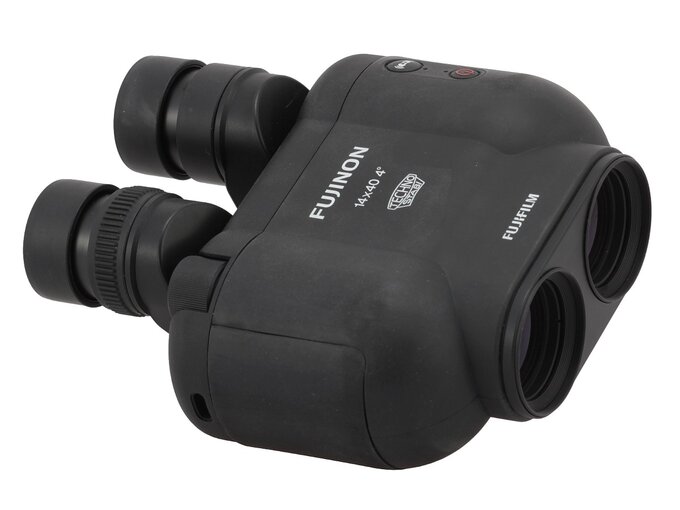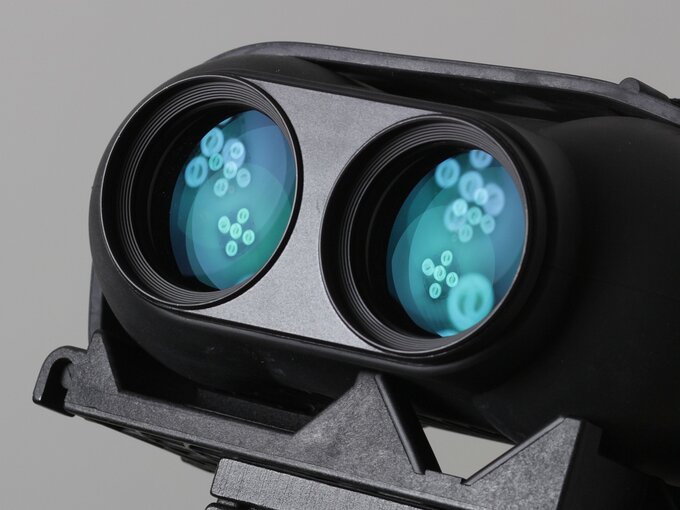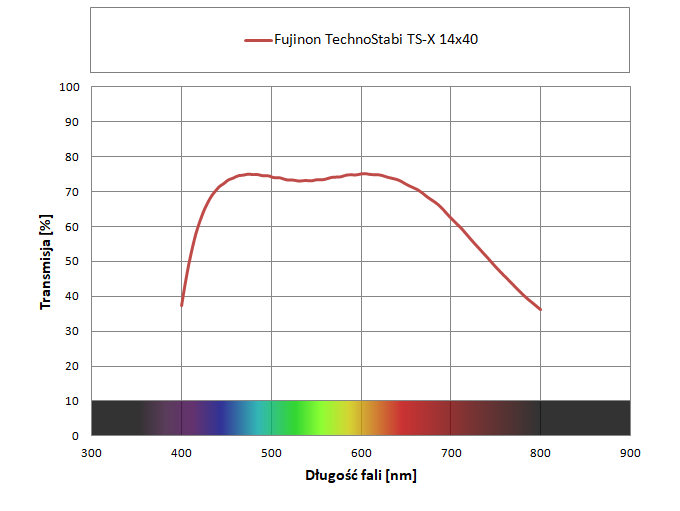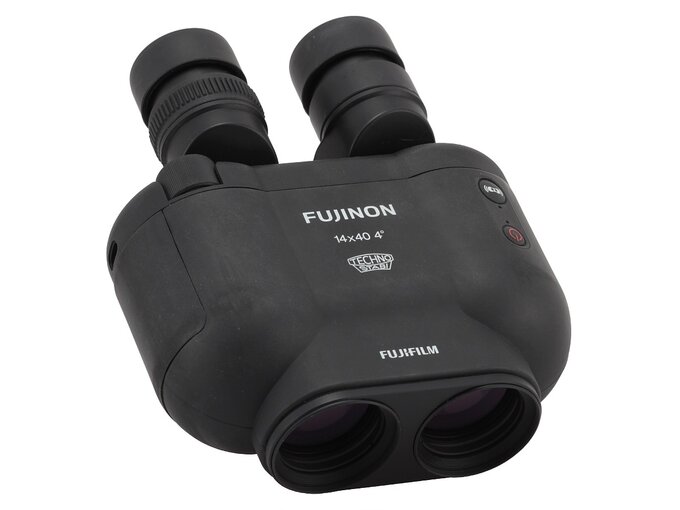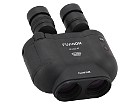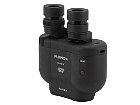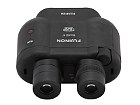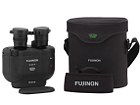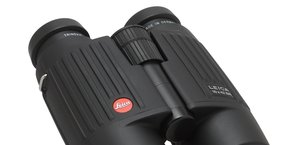| Real front lens diameter |
Left: 40.02+/-
0.05 mm
Right: 39.99+/-
0.05 mm
|
8 / 8.0 pkt |
| Real magnification |
14.02+/-
0.05x
|
3/3.0 |
| Transmission |
73.5+/-
1%
|
7/25.0 |
| Chromatic aberration |
Negiligible in the centre, a bit lower than medium on the edge. |
8.3/10.0 |
| Astigmatism |
Slight. |
8.5/10.0 |
| Distortion |
The distance of the first curved line from the filed centre compared to the field of vision radius: 90% ± 4% |
10/10.0 |
| Coma |
Appears in a distance of 75% of the field of view radius and is a tad lower than medium on the very edge. |
8.2/10.0 |
| Blurring at the edge of the FOV |
The blur occurs in a distance of 97% ± 2% from the field of view centre. |
10/10.0 |
| Darkening at the edge the FOV |
Very low. |
4.4/5.0 |
| Whiteness of the image |
Relatively flat transmission graph with a slight dip near 540 nm. Slightly yellowish colouring with some blue accents. |
4.3/5.0 |
| Collimation |
Perfect. |
5/5.0 |
| Internal reflections |
| Left: |
Right:
|
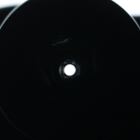 |
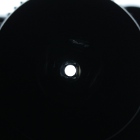 |
A bit of reflections in an area very close to exit pupils. |
4/5.0 |
| Housing |
Very big physical dimensions for the 40 mm class – the binoculars are very bulky. Good quality rubber armour that sticks to your hands. Eyepieces of ordinary size with stiff, rubberized eyecups with four detention stops. Produced in Japan. |
8/8.0 |
| Focusing |
Focusing wheel positioned on the right side of the binoculars' chassis. Its dimensions are moderate and it is covered by fine ribbing without any markings. Its working range amounts to 320-330 degrees. Dioptre correction situated on the right eyepiece; it moves the outer element. |
4.5/5.0 |
| Tripod |
No tripod exit. Image stabilized instrument. |
3/3.0 |
| Interpupilary distance |
from 55.2 to 73.5mm
|
4/6.0 |
| Closest focusing distance |
4.0 meters. |
2/2.0 |
| Eyepieces FOV |
Apparent field of view of eyepieces amounts to 55.5 degrees (simplified formula) and 51.7 degrees (tangent formula). |
7/20.0 |
| Field of view |
Measured by us amounted to 3.96 +/- 0.04 deg and was in accordance with official specifications within the margin of error. A typical field for this class of equipment.
|
5.5/8.0 |
| Quality of the interior of the barrels |
Dark inner tubes but not everywhere as matt as they should be. A lot of apertures inside. The bottom is dark gray. Some specks of dust on the prisms. |
3.7/5.0 |
| Vignetting |
| Left: |
Right:
|
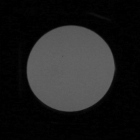 |
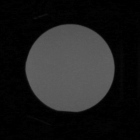 |
OL: 3.95%, OR: 2.49% |
4.5/8.0 |
| Prisms quality |
High quality BaK-4. |
8/8.0 |
| Antireflection coatings |
Green on objective lenses, green-yellow on prisms, green-purple on eyepieces. Medium intensity. |
4.5/5.0 |
| Warranty [years] |
2 |
2/6.0 |
| Final result |
72.3%
|
137.4 / 190 pkt
|
| Econo result |
|
0pkt. |
Summary
Pros:
- low chromatic aberration,
- slight astigmatism,
- good coma correction,
- sharp image practically till the very edge of the field of view,
- negligible brightness loss on the edge of the field,
- sensible colour rendering,
- good quality BaK-4 glass prisms,
- dark areas near exit pupils,
- efficient image stabilization.
Cons:
- poor transmission,
- truncated exit pupils.
The Fujinon Technostabi 14x40 got in our test a very good but, unfortunately, not outstanding score. Why? A lot of points we gave for excellent results in the most important optical categories such as astigmatism, coma, distortion, chromatic aberration, or image quality because in these areas everything was in perfect order. Such a performance exactly should be expected from an expensive pair of binoculars with a moderate field of view that reaches less than 56 degrees.
However, there are two things the Fujinon lacks and a better transmission level is the first of them. A stabilized system is not the simplest possible and here you also have rhomboid prisms that allow you to regulate the distance between eyepieces. As a result the overall transmission of the tested instrument barely exceeds 70% and is definitely too low for a set of binoculars sold at this price point.
The second slip-up we found concerns truncated exit pupils. It shouldn't have happened in binoculars with a not so wide field of view which, additionally, because of its specific design, doesn't have any strict limits when it comes to physical dimensions and weight.
As a kind of consolation you should add that, apart from excellent correction of the majority of basic optical aberration, the Fujinon also features very efficient image stabilization that really performs well. Its only flaw is an irritating, whinying sound when you activate and/or deactivate it. The sound is so loud and high that it might scare off objects you would like to spot, especially when you go out for some wildlife observations.

